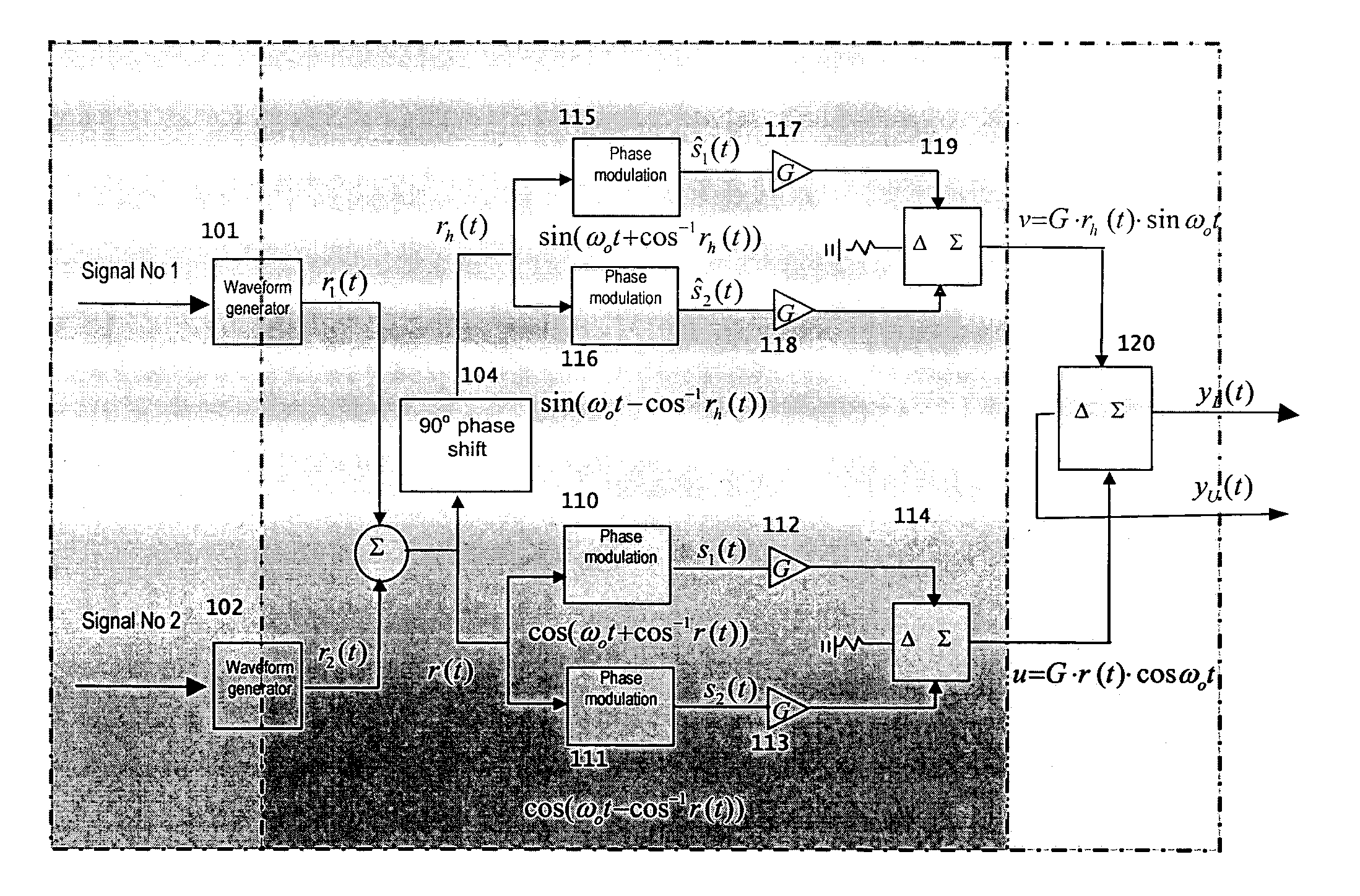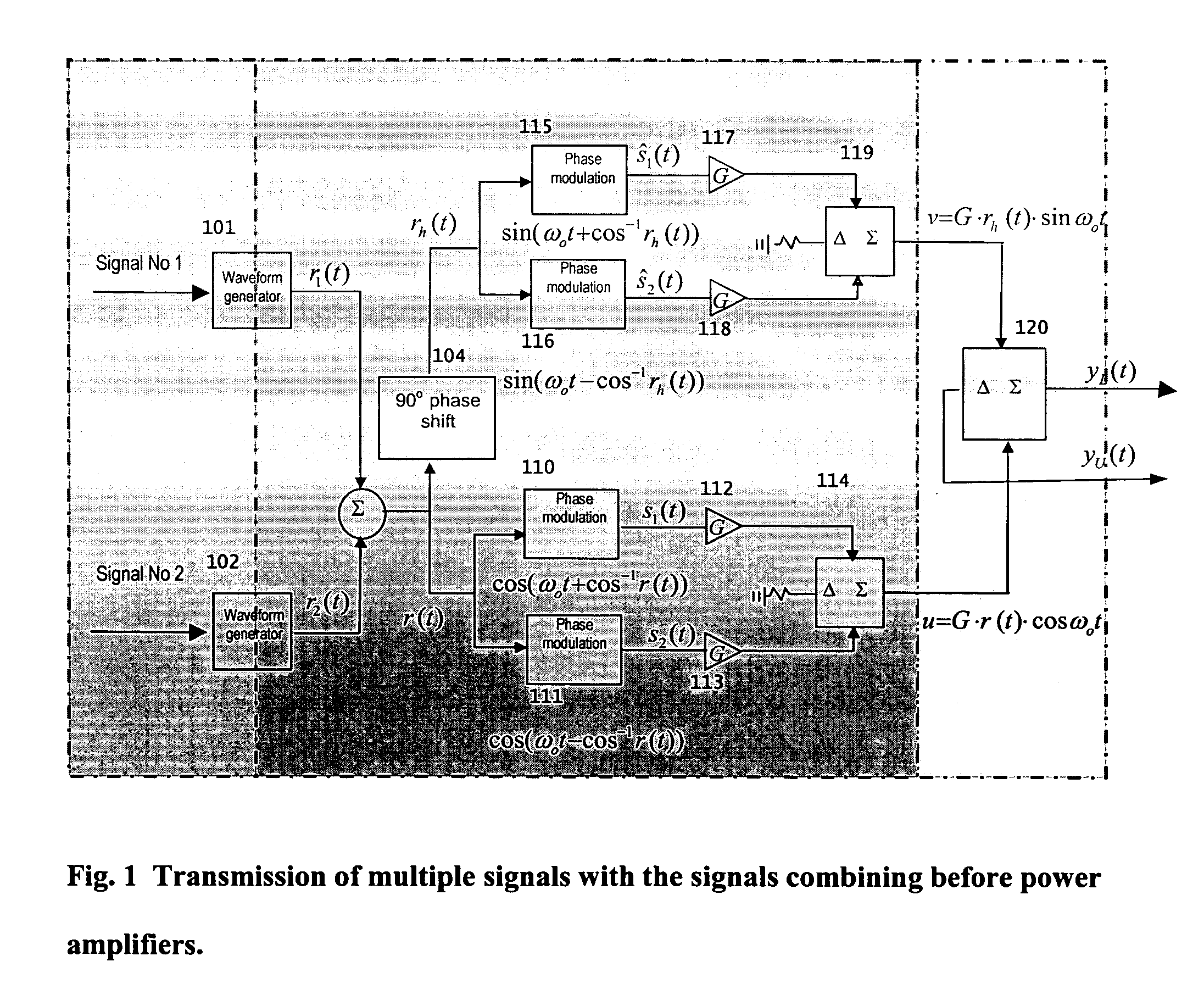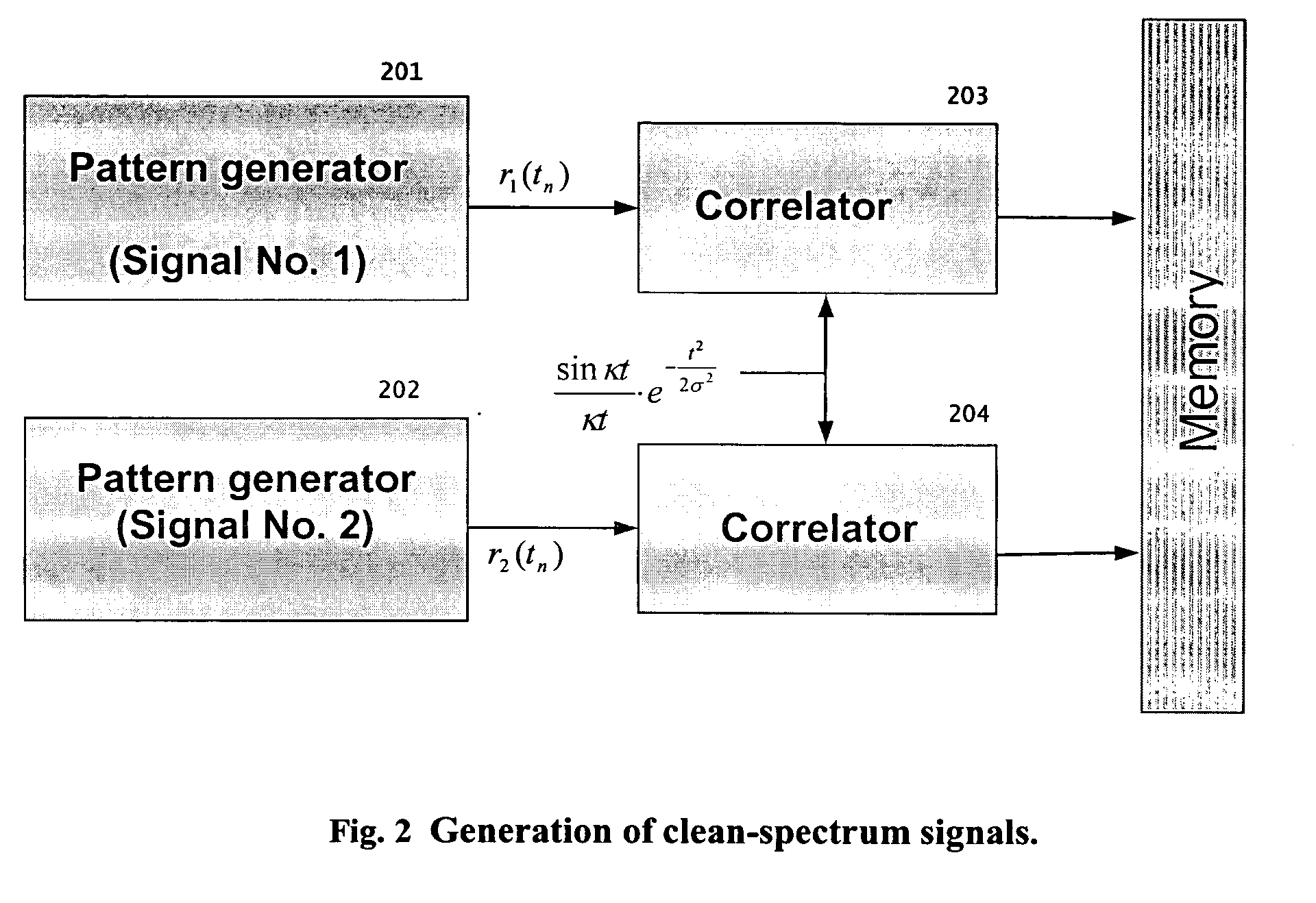Simultaneous transmission of multiple signals through a common shared aperture
a technology of shared aperture and simultaneous transmission, which is applied in the direction of instruments, measurement devices, and using reradiation, etc., can solve the problems of inability to realize the full gain of the antenna on any of the user signals, the platform cannot carry, nor operate properly, and all the desired electronic equipmen
- Summary
- Abstract
- Description
- Claims
- Application Information
AI Technical Summary
Benefits of technology
Problems solved by technology
Method used
Image
Examples
Embodiment Construction
The detailed description of the invention closely follows the block diagrams and figures shown in FIGS. 1 through 12. FIG. 1 is the overall block diagram describing the new technique in transmitting a high power diverse waveform without serious intermodulations and spectral distortion. FIGS. 2 through 4, which are sub-blocks of FIG. 1, detail the practical implementation. FIGS. 5 through 11 are the signal outputs, appearing in time or frequency domains, for some critical blocks shown in FIG. 3
Transmission of Multiple Signals With the Signals Combining Before Power Amplifiers—FIG. 1
FIG. 1 is the overall block diagram describing the new technique in transmitting a high power diverse waveform without serious intermodulations and spectral distortion.
In Blks 101 and 102, clean-spectrum signals r1(t) and r2(t) are generated through the waveform generators in that desired waveforms are generated and passed through the correlators and Digital to Analog converters (DAC). These signals r1...
PUM
 Login to View More
Login to View More Abstract
Description
Claims
Application Information
 Login to View More
Login to View More - R&D
- Intellectual Property
- Life Sciences
- Materials
- Tech Scout
- Unparalleled Data Quality
- Higher Quality Content
- 60% Fewer Hallucinations
Browse by: Latest US Patents, China's latest patents, Technical Efficacy Thesaurus, Application Domain, Technology Topic, Popular Technical Reports.
© 2025 PatSnap. All rights reserved.Legal|Privacy policy|Modern Slavery Act Transparency Statement|Sitemap|About US| Contact US: help@patsnap.com



